Lost And Forgotten Goddess Asherah – Queen Consort Of The Sumerian God Anu And Ugaritic God El
Ellen Lloyd - MessageToEagle.com - Known as Lady of the Sea and mother goddess, Asherah is one of the oldest deities in the Sumerian and Ugaritic pantheon.
Goddess Asherah was worshipped by many ancient civilizations in the Near East.
Was goddess Asherah also the lost bride of Yahweh?
Some biblical scholars believe that Asherah was at one time worshipped as the consort of Yahweh.
Who was the lost goddess of the Hebrews?
Asherah – Chief Goddess Of The Canaanite Pantheon
In Ugaritic mythology, this lost and forgotten deity is referred to as The Lady Asherah of The Sea. Several unearthed ancient clay tablets and writings from Ugarit, which was once an ancient port city in what is today called Ras Shamra, in northern Syria describe goddess Asherah as the wife of chief god El, the West Semitic counterpart of god Anu.
God El was the ruler of heaven and goddess Asherah had the sea as her domain. It is said that she had as many as 70 children and among them were important gods such as Baal, Anath, and Mot. There are also ancient references to one of her servants who was a fisherman named Qadesh was-Amrur. He used to bring her fish and help her saddle her donkey.
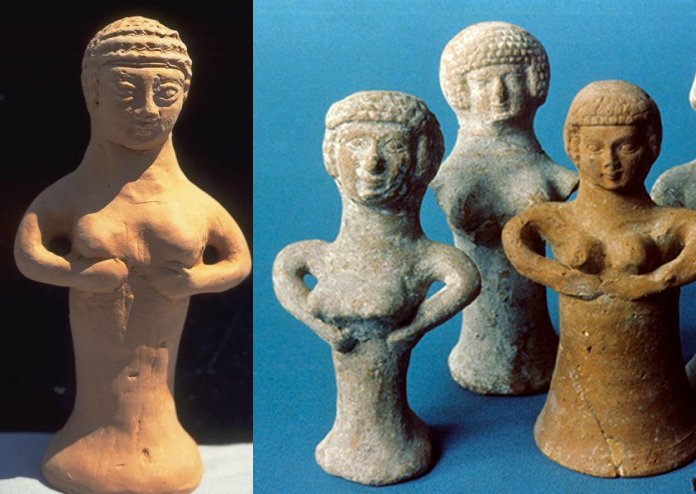
Clay statues of goddess Asherah. Image credit Queen of Heaven - Goddess Asherah
Although goddess Asherah was worshipped in many ancient cities, there is little information about her before the period of Ugaritic myths. Her history is complex and shrouded in mystery.
To the Hittites, this goddess appears as Asherdu(s) or Asertu(s), the consort of Elkunirsa ("El the Creator of Earth") and mother of either 77 or 88 sons.
See also:
Was A Statue Of Asherah Hidden In The Ark Of The Covenant?
Shamash: Mesopotamian God Of Sun, Truth, Justice And Healing
Nanna: Mesopotamian Moon God, Lord Of Wisdom And Father Of The Gods
Mysterious Scorpion Goddess In Myths And Legends
In one Sumerian inscription set up in honor of Hammurabi, King of Babylon, about 1763 B.C., she is mentioned as Ashratum, the bride of Anu. Since the Sumerian and Akkadian god Anu most likely corresponds to the Canaanite god El, historians think that goddess Asherah held the position of the chief or mother goddess for at least three centuries prior to the Ugaritic period.
In the Amarna letters, also known as Amarna Tablets as well as in the Bible the names of Asherah and Astarte interchange which creates confusion among scholars.
Among the Amarna letters, a King of the Amorites is named Abdi-Ashirta, "Servant of Asherah". Ashtart is believed to be linked to the Mesopotamian goddess Ishtar who is sometimes portrayed as the daughter of Anu while in Ugaritic myth, Ashtart is one of the daughters of El, the West Semitic counterpart of Anu.
Goddess Asherah And The Biblical Connection
Raphael Patai writes in his book The Hebrew Goddess that it is almost inevitable that the cult of the great Canaanite mother-goddess should penetrate the Hebrew religion as well. “While it is not easy to reach a definite conclusion as to the physical shape in which Asherah was represented among the Hebrews, a careful perusal of Biblical references to the “Asherahs” seems to indicate that they carved wooden images which were set up by implanting their base into the ground. In early times they often stood next to altars dedicated to Baal, later a “statue of Asherah” was set up in the Jerusalem Temple itself. The word Asherah in Biblical usage can refer to either to the goddess herself or to her image.”
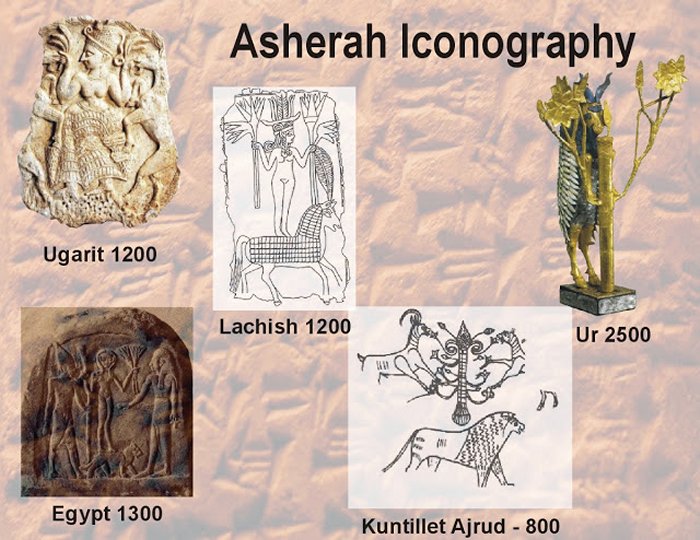
Image credit: Andrew Stehlik
In his book, Did God Have A Wife?, author William G. Dever demonstrates that a cult of Asherah did flourish in ancient Israel. According to Dever, “some of the biblical references to "asherah" are downplayed in the texts, reducing her as it were to only a "shadow of herself" — merely a symbol of the goddess, a pole or tree.”
What Was The Asherah Pole?
The word Asherah is translated in Greek as also, grove, or occasionally by dendra, trees. Asherah poles, which were sacred trees or poles, are mentioned many times in the Hebrew Bible. Asherah poles were also known in Scripture as the "high places." This is likely due to the connection of worship upon hilltops and mountains.
The first mention of the Asherah pole is in Exodus 34:13 (NIV): "Break down their altars, smash their sacred stones and cut down their Asherah poles."
The Israelites were commanded to destroy any Asherah pole they found among the other people in the land.
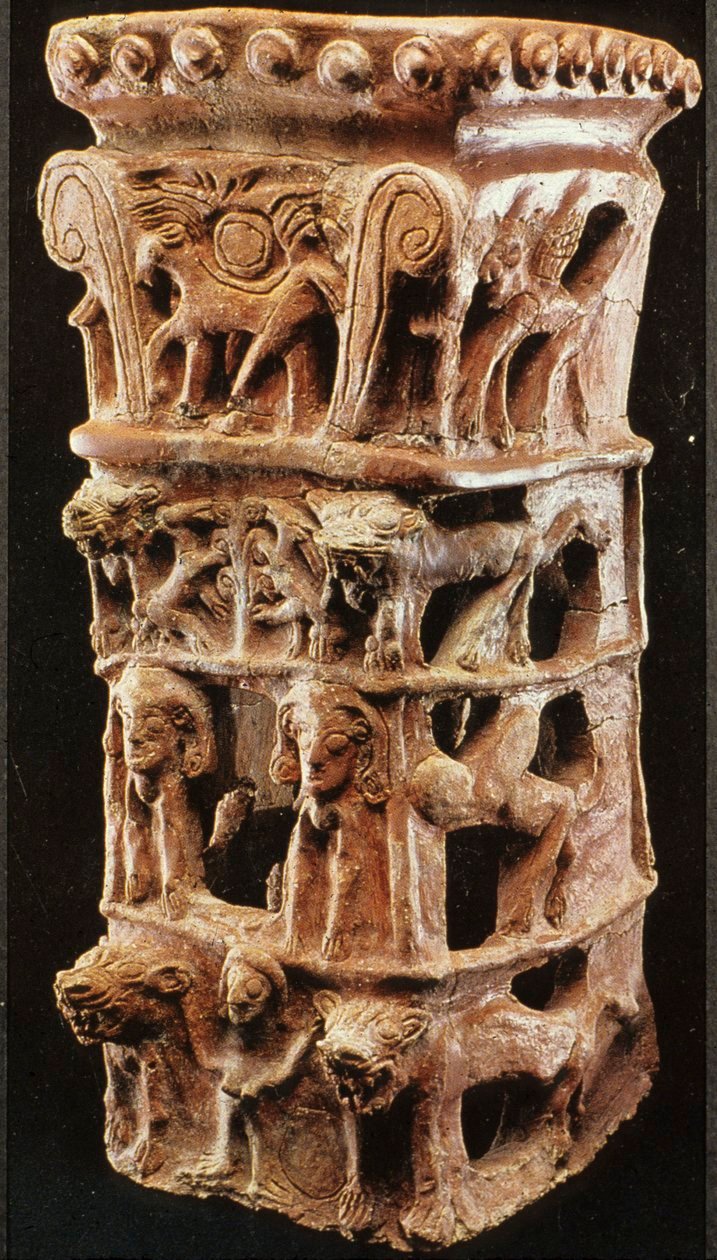
This four-tiered cult stand found at Tanaach is thought to represent Yahweh and Asherah, with each deity being depicted on alternating tiers. Photo: © The Israel Museum, Jerusalem/Israel Antiquities Authority (photograph by Avraham Hay).
In Deuteronomy 16:21, the Lord commanded the people of Israel to not make Asherah poles of their own. However, it did not take long for the Israelites to disobey this command. In Judges 3:7, we read, "And the people of Israel did what was evil in the sight of the LORD. They forgot the LORD their God and served the Baals and the Asheroth." Instead of obeying God's commands, they worshiped the gods of the people God sent them to drive out.
It is believed that many Asherah poles were raised in honor of the mother-goddess Asherah. The purpose of the objects remains a subject of heated debate among scholars.
The whole subject becomes even more complicated due to the discovery of ancient inscriptions unearthed at Kuntillet ‘Ajrud. The inscriptions are religious in nature, invoking Yahweh, El, and Baal. What created an intense debate are the inscriptions that include the phrases "Yahweh of Samaria and his Asherah" and "Yahweh of Teman and his Asherah.
Who or what was Asherah? The answer to this question depends on scholars’ interpretation of Asherah in relation to Yahweh.
Written by Ellen Lloyd – AncientPages.com
Copyright © AncientPages.com All rights reserved. This material may not be published, broadcast, rewritten or redistributed in whole or part without the express written permission of AncientPages.com
Expand for referencesMore From Ancient Pages
-
 Utsuro Bune: Ancient Extraterrestrial Encounter With A ‘Hollow Ship’ And An Alien Visitor
Featured Stories | Jun 11, 2020
Utsuro Bune: Ancient Extraterrestrial Encounter With A ‘Hollow Ship’ And An Alien Visitor
Featured Stories | Jun 11, 2020 -
 On This Day In History: Mayan King Bird Jaguar IV Assumes The Throne – On May 3, 752
News | May 3, 2016
On This Day In History: Mayan King Bird Jaguar IV Assumes The Throne – On May 3, 752
News | May 3, 2016 -
 Fomorians: Supernatural Race Of Giants Who Came From Atlantis
Celtic Mythology | Jul 18, 2017
Fomorians: Supernatural Race Of Giants Who Came From Atlantis
Celtic Mythology | Jul 18, 2017 -
 Mawangdui Medical Manuscripts: Oldest Surviving Anatomical Atlas In The World
News | Sep 2, 2020
Mawangdui Medical Manuscripts: Oldest Surviving Anatomical Atlas In The World
News | Sep 2, 2020 -
 Amazing Ancient Underwater Treasures And Temples Discovered At Thonis-Heracleion
Archaeology | Sep 20, 2023
Amazing Ancient Underwater Treasures And Temples Discovered At Thonis-Heracleion
Archaeology | Sep 20, 2023 -
 Mysterious Cucuteni-Tyrpillian Culture Burned Their Settlements For Unknown Reasons
Civilizations | Feb 12, 2021
Mysterious Cucuteni-Tyrpillian Culture Burned Their Settlements For Unknown Reasons
Civilizations | Feb 12, 2021 -
 New Evidence Of Human Habitation At Panga ya Saidi Cave, Kenya That Dates Back 78,000 Years
Archaeology | May 11, 2018
New Evidence Of Human Habitation At Panga ya Saidi Cave, Kenya That Dates Back 78,000 Years
Archaeology | May 11, 2018 -
 Remarkable Discovery Of Ancient Drilled Bear Teeth In Kansas – How Did They End Up On The Great Plains?
Archaeology | Mar 25, 2022
Remarkable Discovery Of Ancient Drilled Bear Teeth In Kansas – How Did They End Up On The Great Plains?
Archaeology | Mar 25, 2022 -
 Food In Ancient Roman Funerary Meals Was Similar To That Consumed During Life
Archaeology | Aug 30, 2022
Food In Ancient Roman Funerary Meals Was Similar To That Consumed During Life
Archaeology | Aug 30, 2022 -
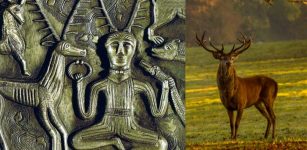 Cernunnos ‘Horned One’ – Powerful Continental God Preserved In Celtic Beliefs As Master Of Animals
Celtic Mythology | Dec 18, 2018
Cernunnos ‘Horned One’ – Powerful Continental God Preserved In Celtic Beliefs As Master Of Animals
Celtic Mythology | Dec 18, 2018 -
 On This Day In History: Galilei Galileo Demonstrates His First Telescope – August 25, 1609
News | Aug 25, 2016
On This Day In History: Galilei Galileo Demonstrates His First Telescope – August 25, 1609
News | Aug 25, 2016 -
 Stribog – Slavic God Of Winds Associated With Destruction, Harvest, Evil And Good
Featured Stories | Jul 1, 2019
Stribog – Slavic God Of Winds Associated With Destruction, Harvest, Evil And Good
Featured Stories | Jul 1, 2019 -
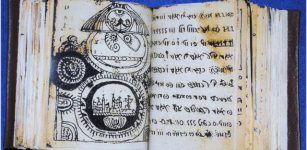 Rohonczi Codex Still Undeciphered – Is It The Most Secret Book Written In A Code?
Artifacts | May 30, 2014
Rohonczi Codex Still Undeciphered – Is It The Most Secret Book Written In A Code?
Artifacts | May 30, 2014 -
 Mysterious Stone Age Cemetery Found Near The Arctic – Why Are The Graves Empty?
Archaeology | Dec 4, 2023
Mysterious Stone Age Cemetery Found Near The Arctic – Why Are The Graves Empty?
Archaeology | Dec 4, 2023 -
 On This Day In History: Viking Forces Laid Siege To Paris – On Nov 25, 885
News | Nov 25, 2016
On This Day In History: Viking Forces Laid Siege To Paris – On Nov 25, 885
News | Nov 25, 2016 -
 Mystery Of The Okefenokee Swamp Deepens: Unexplained Sightings Of Unknown Beings, Puzzling Lights, And Giant Skeletons Reported
Featured Stories | Nov 26, 2024
Mystery Of The Okefenokee Swamp Deepens: Unexplained Sightings Of Unknown Beings, Puzzling Lights, And Giant Skeletons Reported
Featured Stories | Nov 26, 2024 -
 Child’s Play: Are Tibetan Hand And Foot Traces The Earliest Example Of Parietal Art?
Archaeology | Sep 18, 2021
Child’s Play: Are Tibetan Hand And Foot Traces The Earliest Example Of Parietal Art?
Archaeology | Sep 18, 2021 -
 Riddle Of An Ancient Underground City No-One Thinks Exist – Symbol For A Spiritual Quest – Part 2
Featured Stories | Sep 18, 2019
Riddle Of An Ancient Underground City No-One Thinks Exist – Symbol For A Spiritual Quest – Part 2
Featured Stories | Sep 18, 2019 -
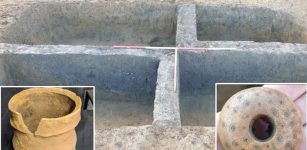 Unknown Saxon Village And Bronze Age Artifacts Found Near Ely, Cambridgeshire
Archaeology | Sep 18, 2023
Unknown Saxon Village And Bronze Age Artifacts Found Near Ely, Cambridgeshire
Archaeology | Sep 18, 2023 -
 Ancient DNA Reveals A 50,000-Year-Old Secret And Re-Writes History Of Australia
Archaeology | Mar 8, 2017
Ancient DNA Reveals A 50,000-Year-Old Secret And Re-Writes History Of Australia
Archaeology | Mar 8, 2017

